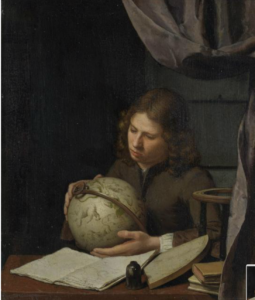Our first Assignment was two readings:
- The Empty Space by Peter Brook.
- “Visits to a Small Planet” by Elanor Fuchs.

Visits to a Small Planet was a short but very novel way for me to consider the “world” of a theatrical piece. Fuchs describes analyzing a play by treating it as its own physical ball of a world, and looking at this world from the perfect vantage point of being not too far away and not too close up. I found myself going over plays I have read and visualizing them as small spheres in my hand.
Fuchs wants us to look at the world of the play first, and then how it changes dynamically over time, and finally at the characters themselves. She also asks us to find the beginning, middle, and end points of the play and ask ourselves why the middle one was so important within the journey to the end. What has changed since the beginning? What hasn’t changed?
I certainly think I will be reading this paper more than once!
The second reading was Peter Brook’s book The Empty Space. Brook’s book breaks down the quality of theatre into four categories, the first one being ‘The deadly theatre’. Brook makes a very interesting point explaining that even good works of theatre can be ‘deadly’. His main example of this is modern renditions of Shakespeare, whose meanings in the time they were written are often lost on a modern audience, even as an actor tries her or his best to keep their part accurate. I can personally relate to this in my exposure to theatre and literature. One example that immediately came to mind when reading Brook’s book was the poem the Odyssey by Homer. In high school I was required to read a very strict translation of the Odyssey, and much of its true essence was lost on my 16-year-old mind. As an adult I re-read the Odyssey as translated by Robert Fitzgerald. Fitzgerald was a poet himself, and took some liberties in his translation to make the Odyssey more approachable to a modern audience. I found myself enjoying his version a lot more than the version I had ben told to read in high school because of this.
In the Final chapter – The Immediate Theatre, Brook describes his interpretation of successful theatre, and why it is so effective to society. Unlike a movie, which is made up of previously captured images, theatre is always presented in the present. Peter explains that this is what makes theatre such a powerful source of “living confrontation”. Likewise, designing for theatre has its own living force. Brook explains that as a director, he finds working with designs and designers who are open-ended to be most successful. As the director and the actors work to refine and interpret their parts and the show as a whole, the design should be able to adapt. Brook sees this as what makes theatre design different from the work of a painter or a sculptor. A theatre designers work is hardly complete even if they submit final renderings on the first day of rehearsal. Personally I find this to be what excites me most about working with live performances. I really enjoy arming myself with the right tools to adapt to changes that better the show, rather than setting my designs in stone. Brook talks about theatre designers paying tribute to the fourth dimension – time. Things change as time in the theatre and rehearsals progresses.
I really enjoyed Brook’s quote about the very first rehearsal of a show: “the purpose of anything you do on the first day is to get you through to the second one.” Sometimes we all just need to meet each other and get comfortable with each others roles on a project before we dive into the details.